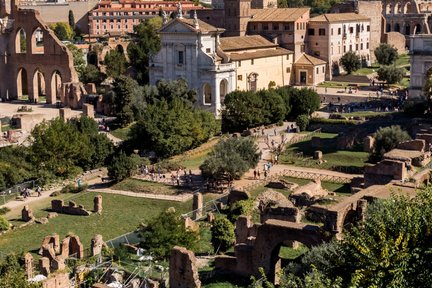Piazza Navona
The best of Piazza Navona
Bucket-list experiences
Make it a getaway
Trouble-free transport
More to explore
Why people love Piazza Navona
Nearby places to go
FAQs about Piazza Navona
When is the best time to visit Piazza Navona in Rome?
How can I get to Piazza Navona using public transportation?
What should I be aware of when visiting Piazza Navona?
What are some practical tips for visiting Piazza Navona?
What unique experiences can I have at Piazza Navona?
What to know before visiting Piazza Navona
Remarkable Landmarks and Must-Visit Sights
Fountain of the Four Rivers
Step into the heart of Piazza Navona and be captivated by the Fountain of the Four Rivers, a stunning Baroque masterpiece crafted by the legendary Gian Lorenzo Bernini in 1651. This iconic fountain is not just a visual delight but a symbolic representation of the world's major rivers: the Nile, Ganges, Danube, and Rio de la Plata. With its towering obelisk and intricate sculptures, it stands as a testament to Bernini's genius and the rich cultural tapestry of Rome. Whether you're an art enthusiast or a casual traveler, this fountain promises to leave you in awe.
Sant'Agnese in Agone
Discover the architectural splendor of Sant'Agnese in Agone, a Baroque church that graces the vibrant Piazza Navona. Designed by the brilliant Francesco Borromini and others, this church is a beacon of 17th-century architectural excellence. Its ornate façade and storied past invite you to delve into the artistic and religious heritage of Rome. Commissioned by Pope Innocent X, Sant'Agnese in Agone is more than just a place of worship; it's a journey through history that every visitor to Rome should experience.
Fontana del Moro
At the southern end of Piazza Navona, the Fontana del Moro awaits to enchant you with its dynamic artistry. Originally sculpted by Giacomo della Porta and later enhanced by the masterful touch of Bernini, this fountain features a captivating scene of a Moor wrestling with a dolphin, surrounded by Tritons. Its historical allure and artistic finesse make it a must-see for anyone exploring the piazza. Immerse yourself in the rich history and vibrant culture that this remarkable fountain embodies.
Cultural and Historical Significance
Piazza Navona is a captivating blend of history and culture, originally serving as a venue for athletic contests in ancient Rome. Its transformation into a Baroque masterpiece during the reign of Pope Innocent X highlights its cultural importance. The square stands on the site of the ancient Stadium of Domitian, commissioned in 86 CE, showcasing Rome's ability to blend history with modern life. Over the centuries, it has evolved into a vibrant square adorned with Baroque masterpieces and rich cultural heritage.
Local Cuisine
While exploring Piazza Navona, indulge in the local Roman cuisine. Savor traditional dishes like 'Cacio e Pepe' and 'Saltimbocca alla Romana' at nearby trattorias. The square is surrounded by numerous cafés and restaurants where visitors can enjoy authentic Italian dishes. From traditional pasta to delectable gelato, the culinary offerings are a treat for the senses. The delightful atmosphere is enhanced by street performances by magicians and dancers.
Architectural Marvels
The square is flanked by impressive structures like the Church of Sant'Agnese in Agone and the Palazzo Pamphilj, adding to its architectural grandeur. These stunning buildings contribute to the enchanting ambiance of Piazza Navona, making it a must-visit for architecture enthusiasts.



